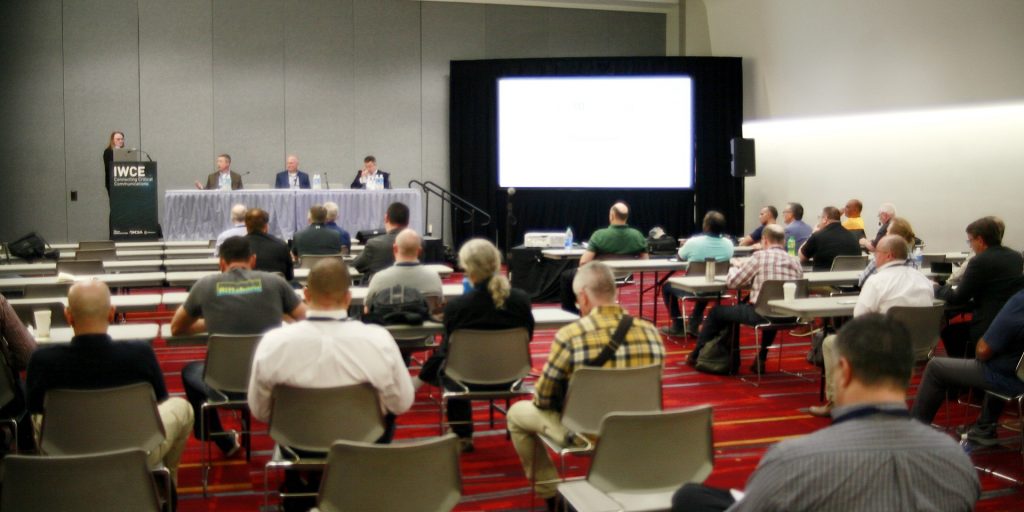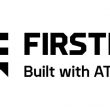IWCE 2022: One decade on, administrators highlight success of FirstNet
It’s been a decade since the First Responder Network Authority (FirstNet) was created under the Middle Class Tax Relief and Job Creation Act of 2012, and for many organizations that’ve traded in land mobile radio as their primary communication method for LTE, it’s been a success.
“We’ve come a long way with it in a short amount of time,” said Joe Duvall, chief of police in Dallas, Ga. “The future is here, and I’m glad we’re a part of it.”
Duvall was speaking on a panel led by the FirstNet Authority titled “Trailblazing with PTT over cellular: Why we did it” at the 2022 International Wireless Communications Expo (IWCE) in Las Vegas, Nev.
FirstNet was conceptualized in the wake of the 2001 World Trade Center attacks as dedicated and interoperable broadband network for public safety. To fulfill those objectives, Congress set aside $7 billion and 20 megahertz of radio spectrum for the network. FirstNet’s authority board created a public-private partnership with AT&T in March of 2017 to build out FirstNet.
When Duvall’s department was exploring what it would cost to update their short-range radio network, which was at the end of its life, Duvall said they were quoted millions of dollars. With a population of around 13,000 people, that just didn’t make sense. Instead, they opted for a broadband system, connecting to FirstNet for around $200,000.
The push-to-talk system that his department converted to far outweighs “the cost of a long-term deal that isn’t going to be a part of future communications,” Duvall said. After experiencing this new era of emergency communication ushered in by FirstNet, he’s convinced “It’s never going to go backward.”
At least in part, Duvall says this is because, as he sees it, all of the large movers in the telecommunication business are “getting in with this basically from the ground floor to help push the technology forward.”
From a user’s standpoint, it’s been an easy integration for his organization so far. There aren’t any towers to maintain, and if a device fails, it can be replaced with minimal hassle. Further, so far, “the coverage has been better than prior what we had,” he continued. “We have no dead spots, like we had with the old (radio) system.”
Two other emergency communication leaders on the panel, Jeff Gray, communications manager at Vanderbilt University Medical Center in Nashville, Tenn., and Lt. Col. Dallas Clements, deputy director of military support in the Tennessee National Guard, concurred with Duvall’s assessment.
“Our story is a little bit different: We had to come up with a way to dispatch teams within the hospital for emergency response—anything from a CPR emergency to a stroke alert,” Gray said. For a while, they used Nextel, then switched to AT&T’s commercial service. That worked until Beyonce came for a show at the university’s football stadium.
“Once the concert started and people started texting and taking selfies, our network shut down in the hospital,” Gray said. “I credit Beyonce Knowles with getting us over to FirstNet—I don’t know if she knows that.”
These days, the Tennessee hospital communicates via FirstNet. Its ground ambulance service does as well.
“The push to talk has worked flawlessly,” Gray said, noting they’ve got LMR on VHF as backup.
For the Tennessee National Guard, the switch to FirstNet was made as a way to give soldiers dedicated and cross-jurisdictional bandwidth.
“We don’t own ground in the state of Tennessee,” Clements said. Because of that, they must request access to existing frequencies whenever they’re deployed. This creates complications, especially during a chaotic incident.
“The tipping point for use was the 2016 Gatlinburg Wildfire,” he said. “Everything they were saying we needed, and other agencies were saying we needed, it all rang true in that event. We needed a way to go from one to 20,” and to be able to reach anyone, fast and easily.
A primary benefit Clements says he’s experienced using push-to-talk is the ability to create groups spontaneously.
“On the state system, we’re one of many users. We share it with many other agencies and some counties,” he said. With push to talk, “I haven’t run into the upper limit of how many talk units I need. I can create them on the fly and then burn them when I’m done.”
But while there’ve been notable strides made since FirstNet launched, there’s still work to be done. Specifically, Clements highlighted a need for different carriers to communicate with each other. Emergency events supersede commercial competitiveness. In this respect, Clements said it feels like “We’ve taken a step backward.”
Other areas cited for improvement by the panel include real-time device tracking capability, and the ability for devices to send data to telecommunication interfaces.




















